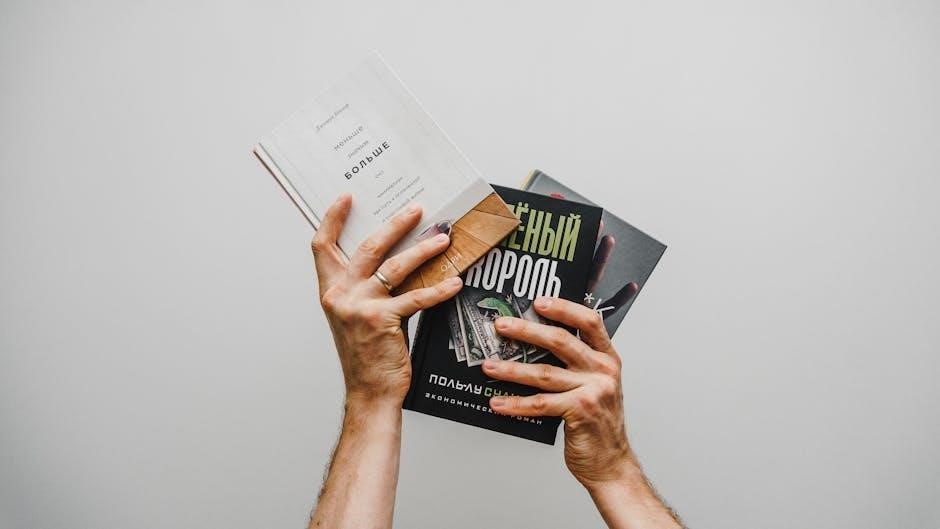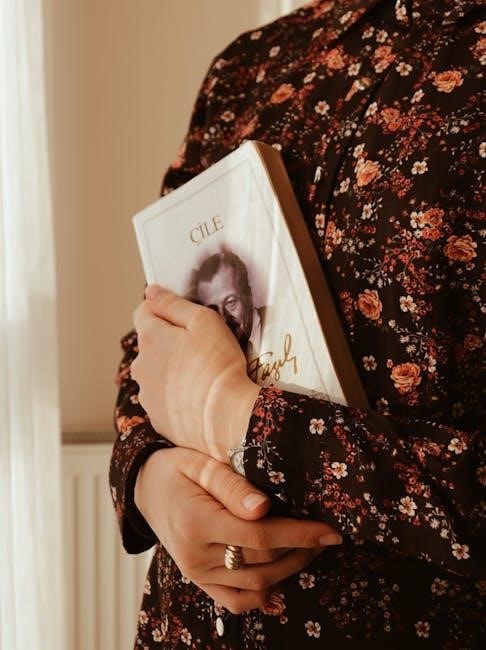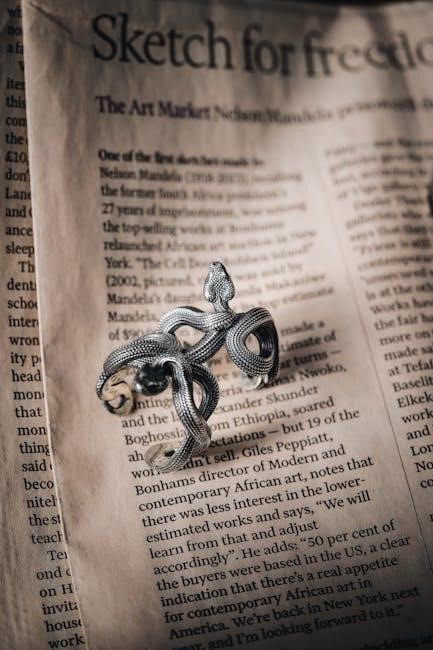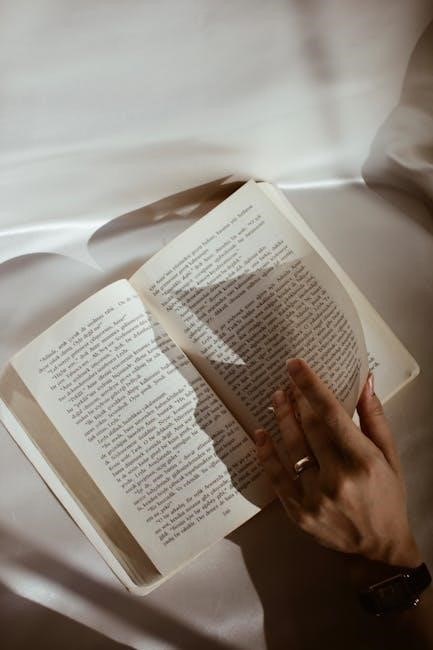This guide provides a practical tool to determine your ring size accurately at home; Use printable charts or measure existing rings to ensure the perfect fit effortlessly.
Why Accurate Ring Sizing is Important
Accurate ring sizing ensures a perfect fit, avoiding discomfort or difficulty in removing the ring. Proper sizing prevents the ring from slipping off or feeling too tight, which can lead to discomfort. It also avoids the need for costly resizing or potential damage to the ring. Measuring correctly ensures the ring complements the finger without compromising style or comfort. Factors like temperature and knuckle size can affect measurements, so precision is key. A well-fitting ring enhances both aesthetics and functionality, making accurate sizing essential for a satisfying purchase or gift. Use this guide to achieve the ideal fit effortlessly.
How to Use This Guide Effectively
Start by printing the guide on A4 paper at 100% scale to ensure accuracy. Verify the print size with a ruler, as provided in the guide. Choose your preferred method: using a printable sizer, measuring an existing ring, or the string technique. For the sizer, cut along the dotted lines and form a loop, adjusting for a snug fit. When using an existing ring, place it over the chart to match the size. With the string method, wrap it around your finger and compare the length to the chart. Ensure measurements are taken at the end of the day for consistency. Follow these steps carefully to determine your precise ring size effortlessly.

How to Print the Ring Size Guide
Print the guide on A4 paper at 100% scale to ensure accuracy. Adjust printer settings to avoid scaling issues and verify measurements with a ruler post-printing.
Ensuring Proper Scaling and Paper Size
Accurate scaling is crucial for the ring size guide to work effectively. Print the guide on A4 or 8.5×11 inch paper with a 100% scaling setting to maintain precise measurements. Before printing, check your printer settings to ensure “Page Scaling” is set to “None” or “Actual Size.” After printing, use a ruler to verify that the reference measurements, such as a 40mm marker, are accurate. If necessary, adjust your printer settings and reprint. Proper scaling ensures that the rings will fit correctly, making the sizing process reliable and stress-free for determining the perfect fit.
Verifying Print Accuracy
After printing, verify the accuracy of your ring size guide to ensure reliable results. Use a ruler to check that the printed scale matches the specified measurements, such as ensuring the 40mm reference mark is precise. If the measurements are off, adjust your printer settings and reprint. Proper scaling ensures the guide reflects actual ring sizes accurately. Incorrect scaling can lead to sizing errors, making it crucial to double-check before use. This step guarantees the guide will help determine your ring size correctly, ensuring a perfect fit for any ring. Verification is essential for the guide to function as intended and provide accurate measurements.

Methods to Measure Ring Size
Measure your ring size using a printable sizer tool, an existing ring, or the string method for accurate results and a perfect fit every time.
Using a Printable Ring Sizer Tool
Print the ring sizer tool on A4 paper at 100% scale to ensure accuracy. Cut out the sizer and form a circle, inserting the tab into the slot. Place your finger inside, ensuring a snug fit. The number facing outward indicates your size. For best results, measure at the end of the day when fingers are at their largest. This method is quick, easy, and provides precise measurements for a perfect fit. Ensure the printed guide is not scaled or cropped, as this can affect accuracy. Use this tool to determine your size confidently before purchasing or ordering a ring.
Measuring with an Existing Ring
To measure your ring size using an existing ring, place it over the circles on the printed guide, ensuring it aligns perfectly. The ring should fit snugly within the circle that matches its size. Compare the internal diameter of the ring to the chart to determine your size. For accuracy, use a ring that fits the finger you intend to wear the new ring on. Measure at the end of the day, as fingers tend to be largest then. This method is ideal for those who already have a well-fitting ring, providing a reliable way to determine their size without needing additional tools.
Using the String Method
The string method is a simple and effective way to measure your ring size at home. Wrap a flexible string or strip of paper around the base of your finger, ensuring it sits comfortably. Mark the point where the string overlaps with a pen. Remove the string and measure the length of the marked section using a ruler. Compare this measurement to a ring size chart to determine your size. For best results, measure at the end of the day when your fingers are at their largest. This method is especially useful if a printer is unavailable, providing a quick and accurate alternative to determine your ring size easily.

Factors Affecting Ring Size
Ring size can vary due to temperature changes and jewelry style. Fingers swell in heat and shrink in cold, while wider bands require a larger size for comfort.
Temperature and Time of Day
Temperature significantly impacts finger size. Warm weather causes fingers to swell, making rings feel tighter, while cold conditions cause fingers to shrink, allowing rings to fit loosely. For accurate measurement, measure your finger at room temperature, avoiding extreme heat or cold. The time of day matters too—fingers tend to be slightly larger in the evening due to daily activities. To ensure the best fit, measure your finger at the end of the day when it is neither too swollen nor too small. Consistency in conditions will help determine the most accurate ring size for comfort and proper fit.
Jewelry Style and Comfort
The style of the jewelry and personal comfort play a significant role in determining the ideal ring size. For example, wider bands may require a slightly larger size to ensure comfort, as they cover more of the finger. Narrow rings, on the other hand, can fit more snugly. Consider the knuckle size, as the ring must slide on and off comfortably. Additionally, personal preference for a snug or loose fit can influence the chosen size. It’s important to balance style with comfort to ensure the ring feels good throughout the day. Always prioritize how the ring sits on the finger, avoiding a fit that’s too tight or too loose for optimal wearability.

Troubleshooting Common Issues
If the printed guide doesn’t align correctly, check printer settings for proper scaling and paper size. Ensure accurate measurements by testing at room temperature and avoiding swollen fingers.
When to Consult a Professional
If uncertain about your ring size after using the printable guide, consider consulting a professional jeweler. They can provide precise measurements using specialized tools, ensuring an accurate fit for any finger or occasion. This is especially recommended for high-value or custom jewelry, where a perfect fit is crucial. Additionally, if your fingers vary significantly in size due to factors like temperature or medical conditions, a jeweler can offer tailored advice. Their expertise ensures comfort and proper sizing, avoiding potential discomfort or the need for resizing. Professional consultation is a reliable option for precise and personalized ring sizing solutions.
Using a printable ring size guide is a convenient and accurate way to determine your ring size at home. By following the steps outlined, you can ensure a perfect fit for any occasion. Whether using a printable chart, measuring an existing ring, or consulting a professional, this guide provides essential tools for success. Remember, factors like temperature and style can affect sizing, so consider these when measuring. With the right approach, you can confidently find your ideal ring size, ensuring comfort and satisfaction. This guide simplifies the process, making it easy to achieve professional-quality results from the comfort of your home.
